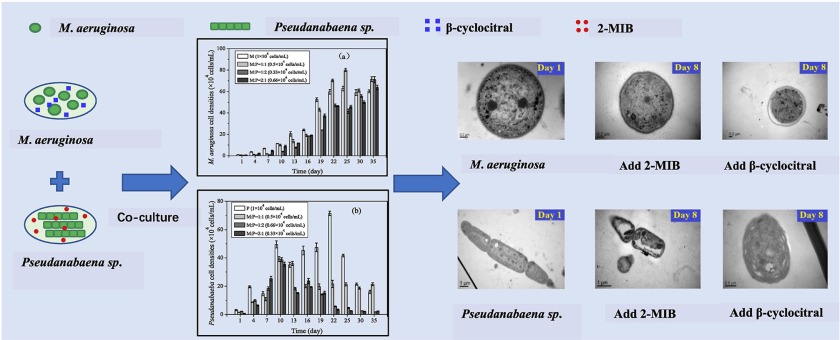
Authors
Kejia Zhang, Renjie Pan, Zhang Luo, Tuqiao Zhang, Jiajia Fan
Microcystis aeruginosa and Pseudanabaena are two common cyanobacterial species/genus and they can occur coincidently in many eutrophic lakes globally. These two cyanobacteria could produce Taste & Odor (T&O) compounds, and their production of T&O compounds might be changed when they are present coincidently. The amounts of T&O compounds and their producers may influence the effectiveness of water treatment processes. Therefore, the mutual interactions between Microcystis aeruginosa (FACHB-905, M) and Pseudanabaena sp. (FACHB-1277, P) on T&O compounds in co-cultures were evaluated in this study. Different initial cell concentrations of M and P, with ratios of M:P = 1:1, M:P = 1:2 and M:P = 2:1 were applied in the co-cultures. The growth of M was enhanced under all of the cyanobacterial cell ratios. The growth of P was enhanced under the ratio of M:P = 1:1, while it was inhibited under the ratios of M:P = 1:2 and M: P = 2:1. In addition, the growth of the two cyanobacteria and their production of β-cyclocitral and 2-methylisoborneol (2-MIB) in the filtrate of P were higher than those in the filtrate of M, which may be attributed to their associated secondary metabolites. The cell integrity and photosynthetic capacity of the two studied cyanobacteria are greatly affected by exposure to β-cyclocitral and 2-MIB. The results showed that β-cyclocitral and 2-MIB had the allelopathic effects on the two cyanobacteria species which might influence the composition of co-existing cyanobacteria and their production of T&O compounds.








